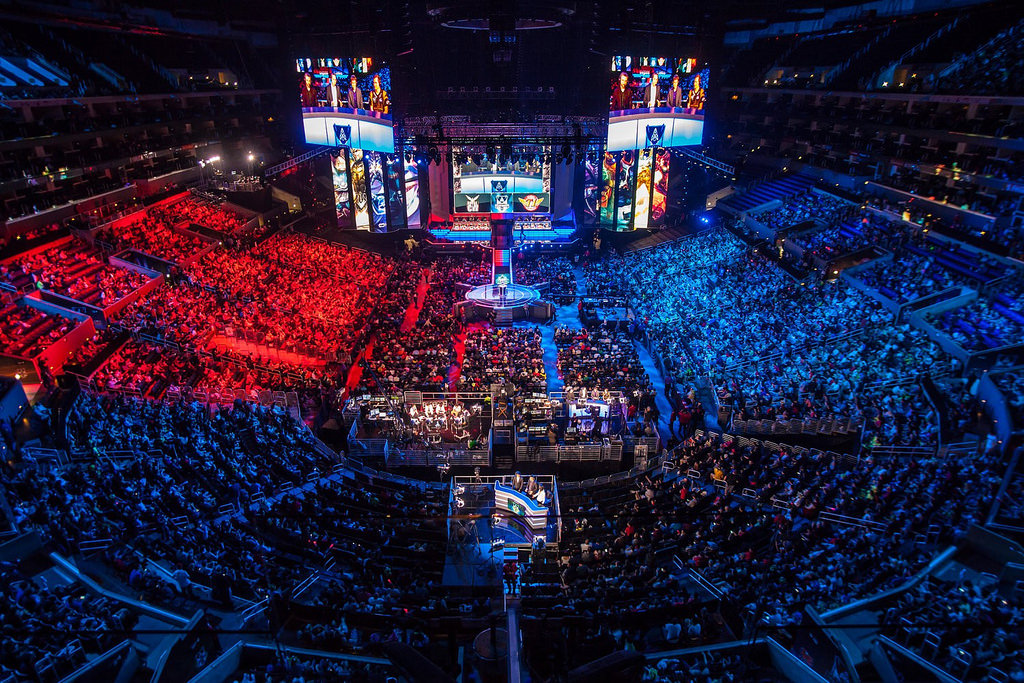Sports and Technology: Transforming Performance, Experience, and Health

In recent years, technology has dramatically reshaped the landscape of sports, revolutionizing everything from athlete training to fan engagement and health monitoring. Advancements in wearable devices, artificial intelligence, virtual reality, and data analytics have made sports more accessible, personalized, and optimized than ever. As a result, athletes can now achieve levels of performance that were once unimaginable, fans can experience the game in exciting new ways, and health professionals can better monitor and manage athletes’ well-being.
This article explores the multifaceted role of technology in modern sports, focusing on its impact on performance enhancement, fan experience, injury prevention, and the emergence of new sports technologies. From the stadium to the smart watch, sports and technology are more intertwined than ever.
1. Enhancing Athletic Performance
For athletes, staying competitive is all about maximizing performance, and technology has become a vital tool in achieving this goal. Various devices and software allow athletes to gather precise data on their movement, strength, endurance, and more, helping them improve in ways that were previously limited to guesswork and intuition.
a. Wearable Technology
Wearable devices have revolutionized how athletes monitor their performance and physical state. Devices such as fitness trackers, heart rate monitors, and GPS sensors provide real-time data on an athlete’s vitals, including heart rate, calories burned, speed, and distance. These insights allow athletes and coaches to tailor training programs, monitor fatigue, and prevent overtraining. Wearables are now common across sports from running to soccer, offering a non-intrusive way to gain valuable insights into each training session.
b. Biomechanics and Motion Analysis
With high-speed cameras and motion analysis software, athletes can now assess and optimize their technique in ways that would have been impossible a few decades ago. For instance, sprinters can analyze every stride, swimmers can monitor their stroke, and basketball players can perfect their jump shots. These biomechanics tools help athletes identify weaknesses and inefficiencies, allowing them to make targeted improvements that enhance their performance.
c. Data Analytics and Performance Metrics
Data analytics tools collect and interpret vast amounts of information from an athlete’s training sessions, competitions, and even daily activities. Coaches use these insights to monitor progress, adjust strategies, and create personalized training programs based on an athlete’s unique needs. For example, baseball coaches can assess swing speed and angles, while soccer coaches use player tracking data to analyze movement patterns and optimize team strategy.
2. Transforming the Fan Experience
Technology has also revolutionized the way fans experience sports, bringing them closer to the action through digital platforms, virtual reality, and interactive media. The stadium experience is now enhanced by digital scoreboards, augmented reality features, and even apps that provide instant replays and live stats.
a. Virtual Reality and Augmented Reality
Virtual reality (VR) and augmented reality (AR) have opened up new ways for fans to engage with their favorite sports. VR allows fans to experience the game from the player’s perspective, providing an immersive experience that simulates the excitement of being on the field. AR, on the other hand, enhances the viewing experience by overlaying real-time stats, player profiles, and even projected trajectories of the ball, making the game more interactive and informative.
b. Social Media and Streaming Services
Social media and streaming platforms have transformed sports into a round-the-clock event, connecting fans directly with teams and athletes. Fans can now watch games live from their smartphones, share highlights on social media, and follow their favorite athletes’ lives off the field. These platforms enable fans to stay engaged, participate in discussions, and feel a sense of community, regardless of their location.
c. Personalized Fan Engagement
Data-driven personalization allows sports franchises to create tailored experiences for fans. From sending game highlights that match a fan’s viewing history to offering personalized merchandise suggestions, teams are using technology to make each fan feel like a VIP. Apps allow fans to select their favorite players, access customized stats, and even receive exclusive content, creating a more immersive and personal sports experience.
3. Injury Prevention and Health Monitoring
One of the most critical applications of technology in sports is injury prevention and health monitoring. Athlete health has always been a primary concern in sports, and new technologies are helping teams and trainers keep their players safe, detect injuries early, and manage recovery more effectively.
a. Injury Prevention Tools
Wearable technology can detect early signs of fatigue or overuse, alerting athletes and trainers before a potential injury occurs. Sensors embedded in uniforms, shoes, and protective gear can monitor stress on joints, alerting coaches when a player may need rest. Similarly, motion sensors track biomechanical imbalances that could lead to injury, enabling athletes to address these issues before they escalate.
b. Concussion Detection
Concussions are a significant issue in contact sports, and technology is providing solutions to monitor and detect these injuries early. Helmet sensors in sports like football and hockey can measure the impact of hits and alert medical staff when a player needs evaluation. These sensors help reduce the risk of long-term brain injuries and enable safer practices within the sport.
c. Rehabilitation and Recovery
For injured athletes, technology has streamlined the rehabilitation process. Advanced physical therapy machines and rehabilitation apps offer targeted exercises and monitor an athlete’s progress throughout recovery. Devices like compression wearables and cryotherapy chambers aid in reducing inflammation, promoting healing, and improving recovery times.
4. The Future of Sports Technology
As technology continues to evolve, so too will its applications in sports. Emerging fields like artificial intelligence, machine learning, and gene therapy may reshape how athletes train, compete, and recover in the future.
a. Artificial Intelligence and Predictive Analytics
AI and machine learning algorithms are helping coaches make better decisions by analyzing data patterns that might go unnoticed by humans. Predictive analytics can forecast player performance, injury risk, and even game outcomes, giving teams an edge. For example, basketball teams use AI to predict opponents’ plays based on historical data, while soccer teams analyze player movement to optimize team formations.
b. Gene Therapy and Genetic Testing
Although controversial, genetic testing may play a role in sports performance in the future. Some researchers believe that gene therapy could eventually enhance physical traits like endurance or strength, potentially offering advantages to athletes who choose this path. However, this raises ethical questions about fairness and the boundaries between natural talent and engineered performance.
c. Virtual Coaching and Training Apps
Online coaching and virtual training apps are bringing professional training to amateur athletes worldwide. Apps like Peloton and Strava allow athletes to train remotely, track progress, and join virtual communities. In addition, virtual reality-based training platforms allow athletes to practice in simulated environments, enhancing their skills without the risk of injury.
5. Challenges and Ethical Considerations
While technology has brought immense benefits to sports, it also raises ethical and social questions. The rise of high-tech sports equipment and genetic testing has led to debates about fairness, access, and the true essence of athletic competition.
a. Fairness and Accessibility
Access to high-tech training and equipment can create a divide between athletes and teams with ample resources and those with limited budgets. Smaller teams and amateur athletes may not have the same opportunities to benefit from sports technology, potentially widening the gap in performance levels. Ensuring fairness in sports means addressing these disparities and finding ways to make advanced technology accessible to all.
b. Privacy and Data Security
With more devices collecting and analyzing personal data, privacy concerns are a growing issue in sports. Athletes’ health, performance metrics, and personal information are now recorded and analyzed, raising questions about who has access to this data and how it is used. Clear guidelines and regulations are essential to protect athletes’ privacy and maintain trust.
c. Integrity of the Sport
Some purists argue that the integration of too much technology risks undermining the essence of sport. Critics fear that reliance on data and technology might reduce the human element of competition, making sports feel more like science than skill. Balancing the benefits of technology with the traditional values of sports will be crucial as the industry continues to evolve.
Conclusion: Technology’s Role in the Future of Sports
Technology has transformed the world of sports, elevating performance, enhancing fan engagement, and promoting athlete health. The advancements made in wearable tech, VR, AI, and data analytics have not only reshaped how athletes train and compete but also enriched the overall experience for fans. As the industry continues to innovate, we can expect technology to play an even more critical role, further pushing the boundaries of what athletes can achieve and how fans experience the excitement of the game.
However, with these advancements come important considerations about fairness, access, and the integrity of sport. Striking a balance between embracing innovation and preserving the competitive spirit of sports will be key to ensuring a future where technology serves as an asset, not a replacement, for athletic talent and effort. As technology and sports continue to evolve together, they offer a glimpse into an exciting future where both athletes and fans can experience new levels of immersion, connection, and achievement.





